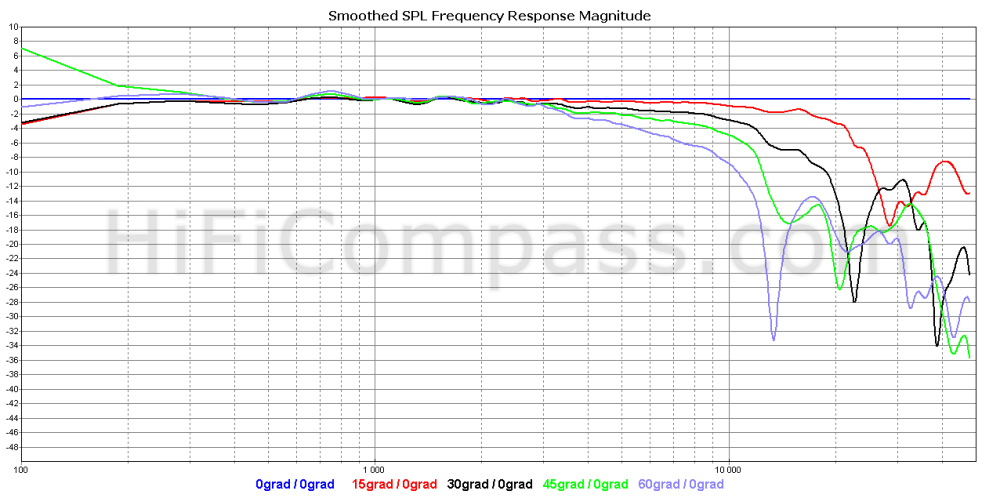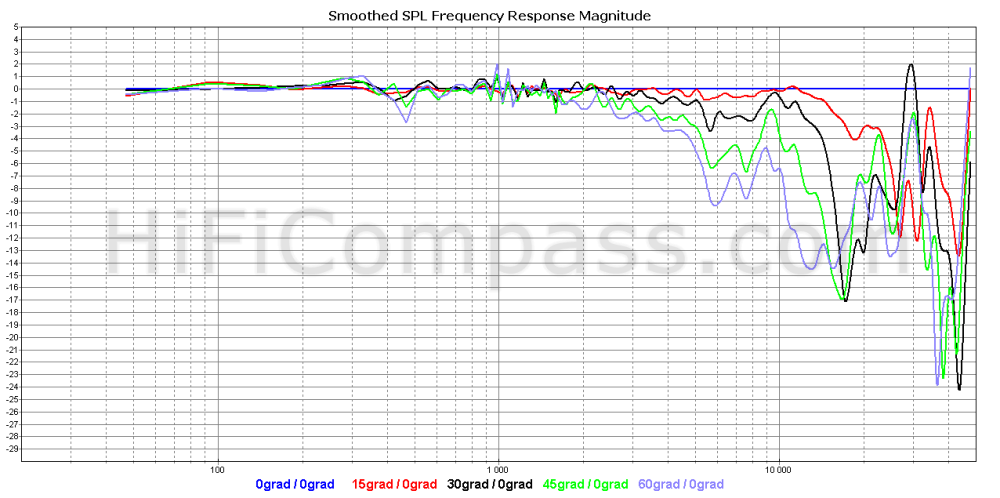So this is the first attempt to put the array in VCAD. I'm sill trying to figure everything out

I just traced the SPL and added the array setup:
This is at 2 meters distance. So now watch what happens at 1m:
So there is no proper merging of the driver units yet, and stuff get's messy. That basically rules this out as back channels in my case, because they will be 1 to 1.5 meters away. And even at 1.5m, it looks bad. Too bad really.
Funny thing: the suckout at 1m is exactly where the driver has a dip as well, which is usually measured at 1m distance as well.. Since these drivers are not pistonic they rely on resonances for HF dispersion, so could be that at other distances, the response would look different for a single driver as well. Interestingly the official datasheet that does not show the dip eludes to something:
It says: "corrected to 1W/1m". My guess would be that it was actually measured at 2m or more. If true, that means that these drivers are basically not usable for nearfield listening if used full-range, same as the Bessel array.




